The logistics and warehousing industry is undergoing a transformative shift. Warehouse automation is at the forefront of this shift, offering innovative solutions to address the growing complexities of modern supply chains. From the precision of robot warehouse picking to the efficiency of automated warehouse robots, technology is redefining the way goods are stored, handled, and transported.
By implementing warehouse automation solutions, businesses can improve operations, reduce costs, and enhance customer satisfaction. With a focus on warehouse robotics and automated warehouse technology, DEVELOP is committed to helping you harness the power of automation to achieve your business goals. Discover how our warehouse automation system integration services can transform your warehouse into a high-performance operation.
Ready to revolutionize your warehouse? Download our free eBook, Automate to Elevate: Your Automation Assessment Guide now and unlock the potential of automation.
Robotic Applications For Logistics And Warehousing
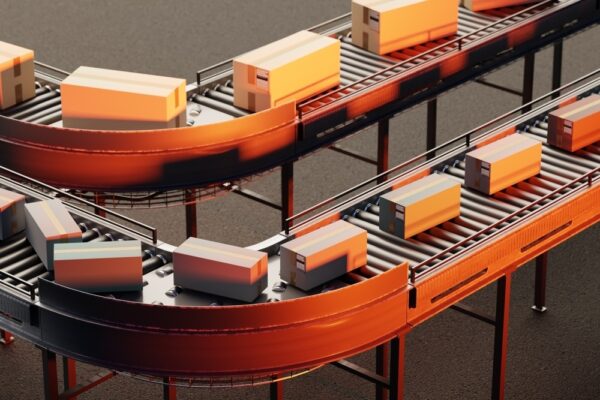
The integration of warehouse robotics is revolutionizing logistics and warehousing operations. Automated warehouse robots are now capable of performing a wide array of tasks, from picking and sorting to packing and palletizing. These warehouse robotic systems are not only increasing efficiency and accuracy but also enabling businesses to adapt to the ever-changing demands of the modern supply chain.
Case Erection
Manual case erection is a labor-intensive and time-consuming process. Workers must manually unfold, form, and seal cardboard boxes, often leading to inconsistencies, bottlenecks, and ergonomic concerns.
Case Erectors
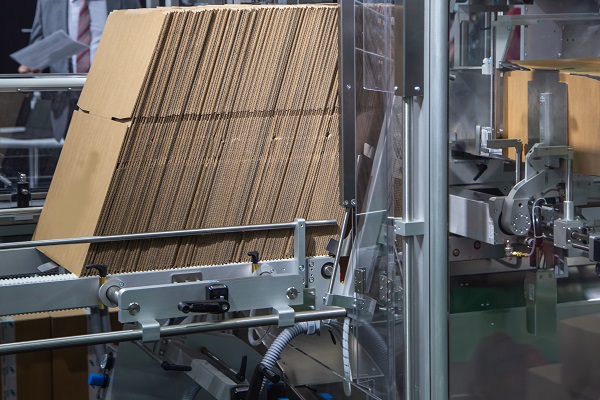
Automated case erectors are a key component of a successful warehouse automation solution. These machines upgrade the case erection process by automatically unfolding and forming flat cardboard into boxes. This not only speeds up case erection but also ensures consistent box quality and reduces labor costs. By eliminating the need for manual intervention, automated case erectors minimize the risk of errors and improve the efficiency of your warehouse robotics system.
Robotic Case Erectors
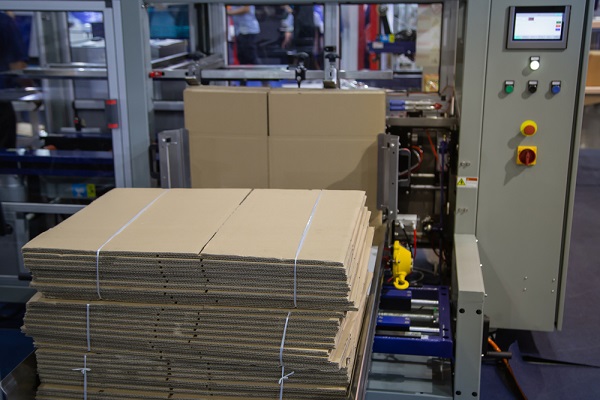
For even greater flexibility and adaptability, robotic case erectors are at the forefront of warehouse automation technology. Equipped with advanced robotic arms and vision systems, these automated solutions can handle a wide variety of box sizes, styles, and materials. They excel at complex case erection tasks, adapting to changing production requirements and ensuring seamless integration into your existing warehouse automation integration.
Conveyors & Part Feeding
Manual material handling between workstations is a common bottleneck in warehouse operations. Workers spend valuable time physically moving items, leading to inefficiencies, increased labor costs, and potential for human error. This can disrupt the flow of your warehouse and hinder overall productivity.
Finishing Operations
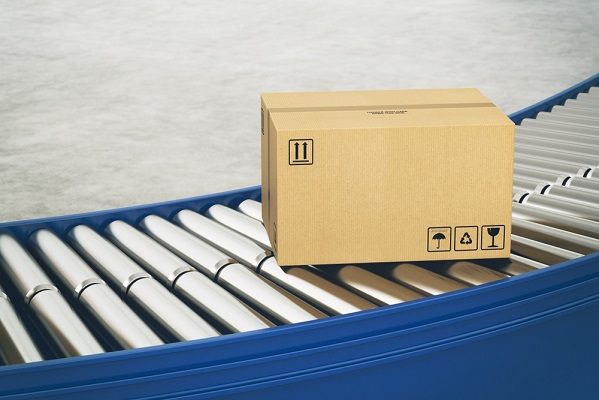
Roller conveyors, available in both gravity-fed and powered options, are another versatile solution for efficient material handling. They use rollers to move items along a path, ensuring smooth and controlled transportation of goods between workstations. Roller conveyors can be easily integrated into existing warehouse robotic systems to enhance automation and improve overall efficiency.
Belt Conveyors

Belt conveyors are an essential part of any automated warehouse technology. These continuous belts seamlessly transport items over long distances, connecting different workstations and processes within your facility. When automating material handling, belt conveyors improve workflows, reduce manual labor, and accelerate throughput.
Finishing Operations
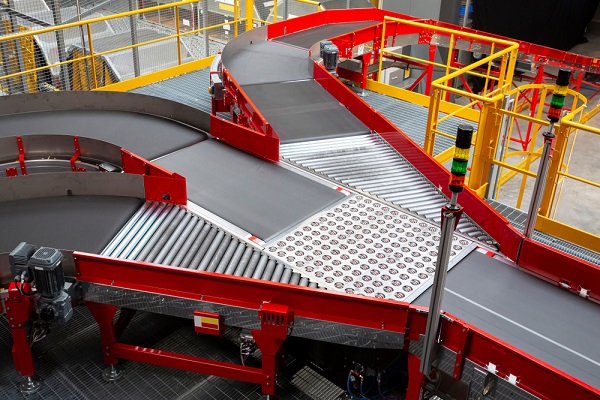
Sortation systems are a critical component of an automated fulfillment system. The intelligent systems automatically sort and divert items to their designated destinations based on predefined criteria, such as size, weight, or barcode. Because they eliminate the need for manual sorting, sortation systems improve order fulfillment, reduce errors, and ensure timely delivery of goods.
Packaging
Manual picking and packing operations can be a major bottleneck in warehouse automation. They’re not only time-consuming and repetitive but also prone to human error, leading to inaccurate orders and customer dissatisfaction. These inefficiencies can significantly impact the productivity and profitability of your warehouse.
Robot Warehouse Picking

Robot warehouse picking systems, equipped with advanced grippers or suction cups, offer a transformative solution. These robotic arms can accurately and efficiently pick items from shelves or bins and place them in boxes or onto pallets. By automating this repetitive task, you can significantly increase picking speed and accuracy, while freeing up your workforce for more complex tasks.
Automated Inspection
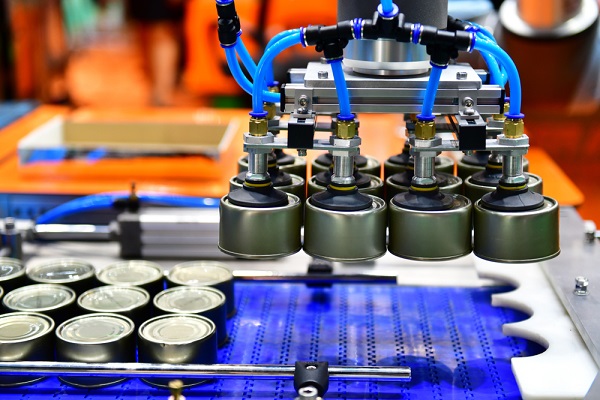
For a fully automated fulfillment system, robotic packing systems are the ultimate solution. These integrated systems combine robotic arms with conveyor belts, vision systems, and other automation technologies to handle the entire packing process, from picking and placing items to sealing and labeling boxes. Robotic packing systems can dramatically increase throughput, reduce errors, and optimize your entire warehouse.
Assembly and Kitting
Manual assembly and kitting processes within a warehouse environment are often plagued by slow speeds, high error rates, and inconsistent product quality. Human workers may experience fatigue or make mistakes, leading to costly rework and delays. This can severely hamper the efficiency and throughput of your warehouse
Robotic Assembly Cells
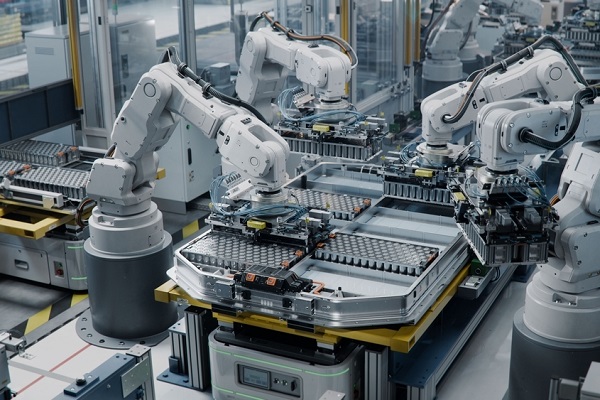
Robotic assembly cells offer a comprehensive solution for automating complex assembly tasks. These integrated systems use warehouse robots equipped with robotic arms, vision systems, and specialized tooling to perform precise and repetitive assembly operations. Incorporating robotic assembly cells into your warehouse automation solution means you can significantly increase production speed, improve product quality, and reduce labor costs.
Collaborative Robots (Cobots)
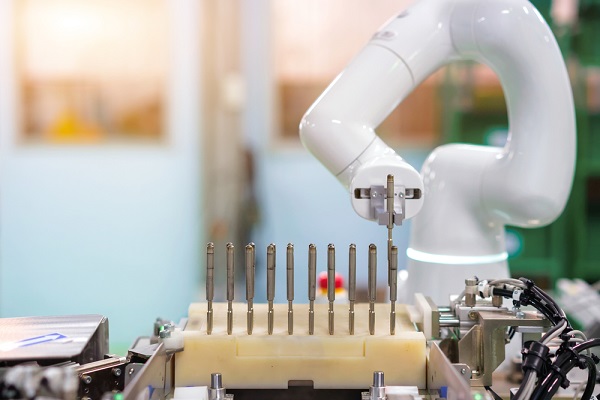
Collaborative robots, or cobots, are designed to work safely alongside human workers, enhancing their capabilities and improving the ergonomics of manual assembly tasks. Cobots can handle repetitive or physically demanding tasks, freeing up human workers to focus on more complex and value-added activities. This collaborative approach can boost productivity, reduce errors, and create a more efficient warehouse robotics system.
Automated Fastening Systems
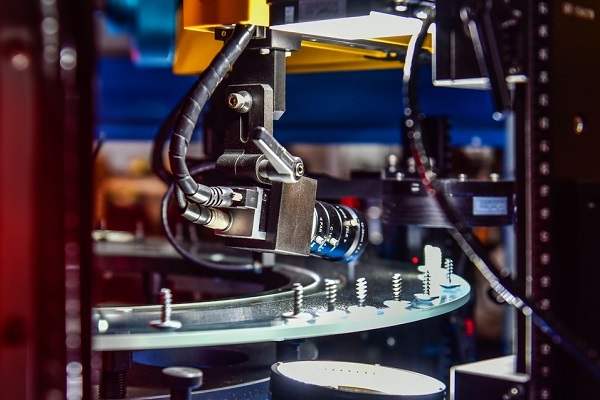
Automated fastening systems streamline the process of securing components together, such as screwing and riveting. They use robotic arms or specialized machinery to automate repetitive fastening tasks, ensuring consistent torque and precise placement. Incorporating automated fastening systems into your warehouse automation integration means you can accelerate production, improve product quality, and minimize the risk of worker injuries.
Automated Kitting
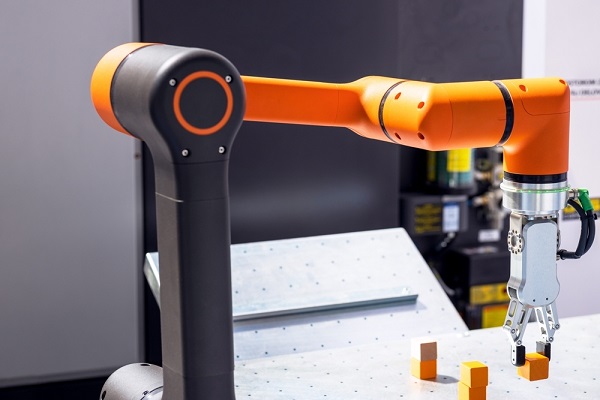
By automating kitting, warehouses can significantly reduce order processing time as robots rapidly pick and consolidate items from various locations. This not only accelerates order fulfillment but also increases accuracy by minimizing the risk of human error in item selection and order consolidation. The scalability of these automated solutions allows warehouses to easily adapt to fluctuations in demand, ensuring efficient kitting regardless of order volumes.
Case Sealing
Manual case sealing is often plagued by inconsistencies and slow speeds. Human workers may struggle to maintain consistent tape or glue application, leading to improperly sealed boxes that can compromise product integrity during shipping. This manual process can create bottlenecks in your warehouse automation system and negatively impact overall efficiency.
Automated Trimming Solutions
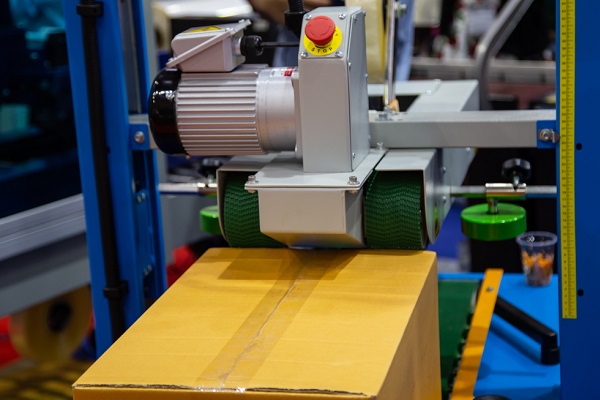
Automatic case sealers offer a reliable and efficient solution for sealing cardboard boxes. They automatically apply tape or dispense adhesive to the top and bottom flaps of boxes, ensuring a secure and uniform seal every time. Automating this repetitive task means you can significantly increase production speed, reduce labor costs, and improve the quality of your warehouse automation solution.
Robotic Case Sealers
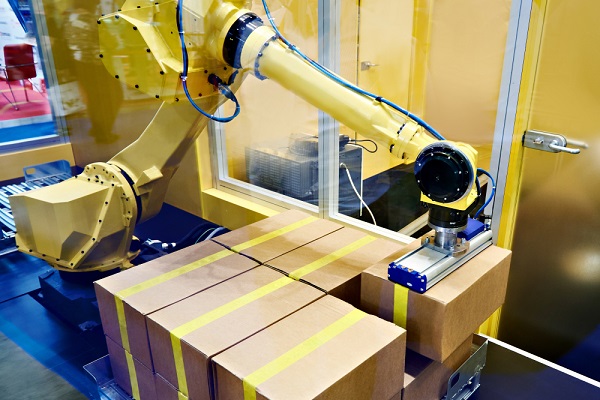
For more complex case sealing applications or those requiring greater flexibility, robotic case sealers are the ideal solution. These warehouse robotic systems use robotic arms equipped with specialized end-of-arm tooling to apply tape or adhesive with precision and accuracy. Robotic case sealers can handle a wide range of box sizes and configurations, adapting to changing production requirements and seamlessly integrating into your warehouse automation integration.
Pallet Dispensing
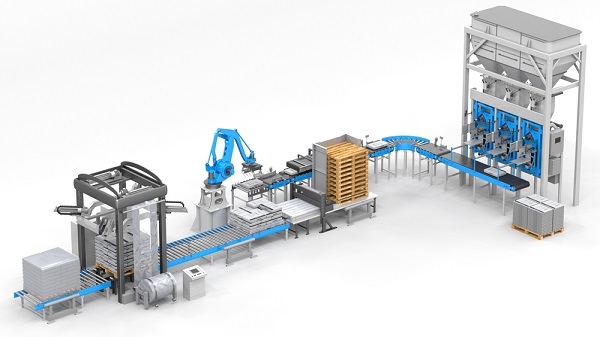
Manual pallet handling is a physically demanding and time-consuming task. Workers must manually lift, move, and stack pallets, leading to potential injuries, fatigue, and decreased productivity. This can create a significant bottleneck in your warehouse and hinder overall efficiency.
Push-Pull Pallet Dispensers
Push-pull pallet dispensers offer a streamlined solution for warehouse automation. These systems use either manual or automated mechanisms to push or pull pallets into the desired position for loading or unloading. Automating pallet handling means these dispensers reduce manual labor, minimize the risk of injuries, and improve the overall efficiency of your warehouse.
Gravity-Fed Pallet Dispensers
Gravity-fed pallet dispensers use a simple yet effective design to automate pallet dispensing. Pallets are loaded onto an inclined track, and gravity naturally feeds them into position as needed. This automated warehouse technology eliminates the need for manual pallet handling, reduces labor costs, and improves the flow of your warehouse robotics system.
Labeling

Manual labeling is a tedious and error-prone process that can significantly hinder your warehouse automation efforts. Misplaced or incorrect labels can lead to misplaced inventory, shipping errors, and costly returns. This bottleneck can negatively impact the efficiency of your warehouse robotic systems and overall productivity.
Print-and-Apply Labelers
Print-and-apply labelers are a cornerstone of an automated fulfillment system. These warehouse automation solutions seamlessly print and apply labels to packages or pallets, ensuring accuracy and traceability throughout your supply chain. By automating this crucial task, you can eliminate human error, increase labeling speed, and enhance your warehouse robotics system.
Corner-Wrap Labelers
For improved visibility and easy identification, corner-wrap labelers offer a specialized solution. These automated warehouse robots precisely apply labels to the corners of packages, making them readily scannable from multiple angles. Corner-wrap labeling ensures that your packages are properly tracked and routed throughout your warehouse automation system, minimizing the risk of lost or misplaced items.
Top Labelers
Another valuable asset in your warehouse automation toolbox, these machines efficiently apply labels to the top of packages or pallets, ensuring clear visibility for scanning and identification. By automating top labeling, you can transform your entire warehouse processes and maintain accurate inventory control within your automated warehouse technology system.
Palletization
Manual palletizing is a physically demanding and repetitive task, often leading to worker fatigue, injuries, and inconsistencies in pallet building. The result is typically workflow issues in your warehouse that negatively impact overall efficiency.
Robotic Palletizers

Robotic palletizers are a key component of an automated warehouse system. These versatile warehouse robots utilize robotic arms equipped with specialized grippers or vacuum attachments to pick and place items onto pallets in a precise and efficient manner. When you automate the palletizing process, you can significantly reduce labor costs, minimize the risk of workplace injuries, and improve the accuracy and speed of your warehouse processes.
Layer Palletizers
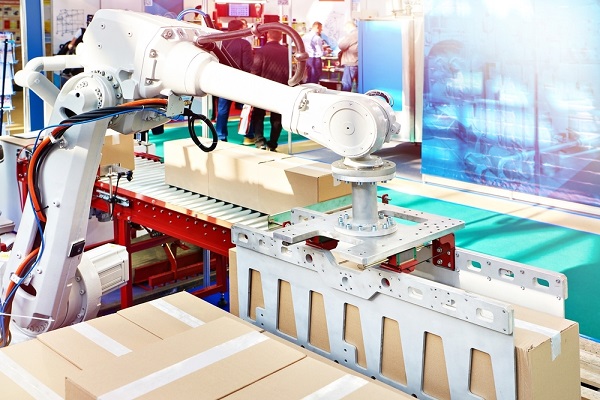
Layer palletizers offer another approach to automated palletizing. These warehouse robotic systems form complete layers of products before placing them onto a pallet. This method ensures stable and secure pallet loads, reducing the risk of product damage during storage and transportation. Layer palletizers can be easily integrated into existing warehouse automation systems, enhancing efficiency and optimizing the use of warehouse space.
Pallet Shrink Wrapping
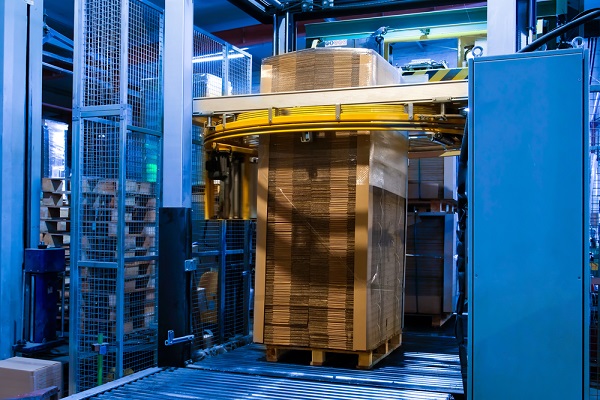
Manual shrink wrapping is a time-heavy and labor-intensive process. It often leads to inconsistencies in the application of shrink wrap, potentially compromising the stability and protection of palletized goods during storage and transportation. The result is damaged products, increased costs, and dissatisfied customers, hindering the efficiency of your warehouse automation system.
L-Bar Sealers
L-bar sealers are a popular warehouse automation solution for sealing shrink wrap on two sides of a pallet. These automated machines efficiently apply heat to seal the film, creating a secure and protective barrier around the load. L-bar sealers can significantly increase the speed and consistency of shrink wrapping, improving overall throughput in your warehouse robotic systems.
Side Sealers
These machines focus on sealing the sides of the pallet, ensuring a tight and secure wrap that protects the goods from dust, moisture, and other environmental factors. Automating side sealing means you can enhance the efficiency and reliability of your shrink wrapping process, contributing to a more streamlined warehouse automation solution.
Tunnel Shrink Wrappers
Tunnel shrink wrappers offer a fantastic solution for fully automated pallet wrapping. Pallets pass through a heated tunnel, where the wrap shrinks and conforms tightly around the load. This creates a highly stable and protective barrier, minimizing the risk of product damage during shipping and storage. Tunnel shrink wrappers are a valuable asset in any automated warehouse system, ensuring efficient and reliable pallet wrapping.
Mobile Robots (AGVs/AMRs) & Warehouse Management
Inefficient material transport and inventory management can lead to significant bottlenecks within a warehouse. Manual transportation of goods is time-consuming, labor-intensive, and prone to errors, while outdated inventory management systems can lead to stockouts, overstocks, and misplaced items. This can significantly hamper the efficiency and productivity of your warehouse
Automated Guided Vehicles (AGVs)

These are now a cornerstone of warehouse automation technology. These pre-programmed vehicles follow fixed paths within the warehouse, efficiently transporting materials between designated locations. By automating repetitive material handling tasks, AGVs free up human workers for more complex tasks, improve safety, and enhance overall warehouse automation.
Autonomous Mobile Robots (AMRs)
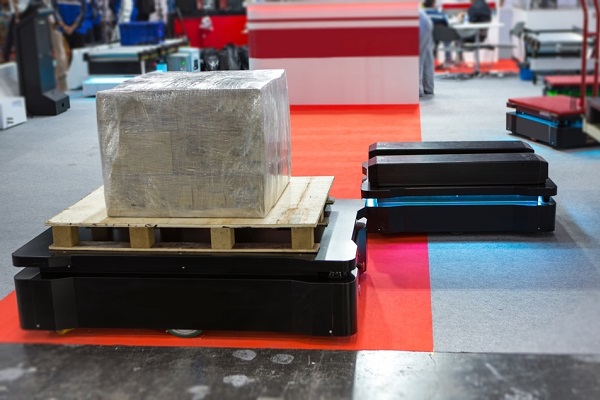
AMRs represent the next generation of warehouse automation solutions. The intelligent warehouse robots navigate dynamically, using sensors and sophisticated software to adapt to changing environments and avoid obstacles. AMRs can be used for a wide range of tasks, from material transport and order picking to inventory management and data collection, making them a versatile and valuable addition to any warehouse robotic system.
The Future of Warehousing is Automated
Warehouse automation is no longer a luxury, but a necessity. From automated fulfillment systems and robotic order fulfillment to warehouse picking robots and pallet handling solutions, the possibilities are vast. By integrating these warehouse robotic systems into your operations, you can unlock unprecedented levels of efficiency, productivity, and cost savings.
Not sure where to start? Our free Automation Assessment Questionnaire is designed to help you pinpoint areas of your warehouse operations that could benefit most from automation. Answer a few simple questions, and our team of experts will provide you with a personalized assessment and recommendations tailored to your specific needs.
Ready to unlock the true potential of warehouse automation? Download DEVELOP’s groundbreaking eBook, Automate to Elevate: Your Automation Assessment Guide, and get an insider’s look at the world of warehouse automation solutions. This comprehensive resource arms you with the knowledge and tools to make informed decisions about your warehouse automation strategy.
